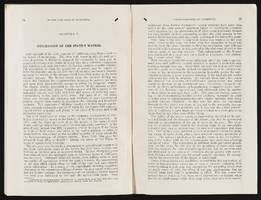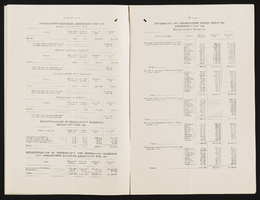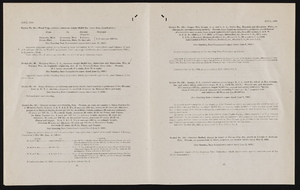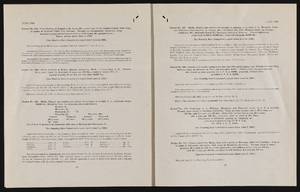Search the Special Collections and Archives Portal
Search Results
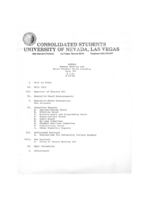
Meeting minutes for Consolidated Student Senate, University of Nevada, Las Vegas, May 12, 1981
Date
1981-05-12
Archival Collection
Description
Includes meeting agenda and minutes along with additional information about the executive board nominations. CSUN Session 11 Meeting Minutes and Agendas.
Text
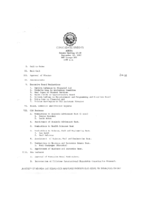
Meeting minutes for Consolidated Student Senate University of Nevada, Las Vegas, September 12, 1985
Date
1985-11-12
Archival Collection
Description
Includes meeting agenda and minutes. CSUN Session 15 Meeting Minutes and Agendas.
Text
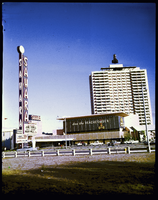
The Sahara Hotel and Casino, don the Beachcomber Restaurant, and the marquee: photographic film
Date
1960 (year approximate) to 1986 (year approximate)
Archival Collection
Description
An external view of the Sahara Hotel and Casino, don the Beachcomber Restaurant, and the marquee. The marquee advertises "Congo Room" "Stan Irvin Presents Jane Powell Dave Barry Maury Wills and singers" "B. [Buddy] Hackett & B [Buddy] Grecko" "Ceasar Theatre Music made famous by Glenn Miller" "Tex Beneke" "Ray Eberle" "The Modernaires with Paula Kelly" "Freddie Bell" and "Roberta Lynn". Taxi cabs are lined up waiting for fares. The Sahara Hotel and Casino (currently the SLS Hotel & Casino Las Vegas) was in operation for 59 years from 1952 to 2011. The hotel had 1,720 guestrooms and suites with a casino covering more than 85,000 square feet (7,900 m2). The first casino built on the site was Club Bingo, which opened in 1947. Owner Milton Prell replaced the casino with a new casino hotel in 1952 called the Sahara Hotel. Located just outside the City of Las Vegas, it was the sixth resort to open on the Strip. In 1961, the hotel was purchased by Del Webb. In 1962, a Don the Beachcomber restaurant opened in the hotel. The 24-story Alexandria Tower was added in 1963, which made the hotel the tallest building in Las Vegas. By 1978, the 27-story Tangiers Tower was added to the property. In 1999, further renovations added a roller coaster and a restaurant. The roller coaster, named "Speed - The Ride", shot riders from the hotel outside along the Las Vegas Strip, where it looped through the grandiose Sahara sign in front of the hotel, went straight up a tower, stopped and then took a return trip backwards. The Sahara shut down on May 16, 2011. The "Speed - The Ride", which was located in front of the casino, was sold and removed. It will be relocated across the Mandalay Bay in the new Akita Plaza. On February 14, 2013, Nazarian announced the groundbreaking for the $415 million conversion of the hotel into the SLS Las Vegas. The hotel opened on August 23, 2014. It contains 1,600 rooms, a casino, four nightclubs, the clothing store Fred Segal and various restaurants. The name "SLS" was chosen by Nazarian to denote style, luxury and service. The property is located at 2535 Las Vegas Blvd. South, Las Vegas, Nevada 89109.
Image
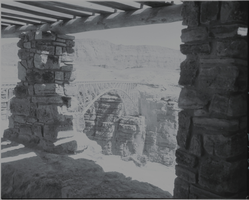
Film transparency of of the Navajo Bridge, Grand Canyon, Arizona, circa 1930s
Date
1930 to 1939
Archival Collection
Description
A view of the Navajo Bridge from inside an adjacent stone building, possibly the Old Cliff Dwellers Lodge (Blanche Russell Rock House), that was built circa 1920. Navajo Bridge crosses the Colorado River's Marble Canyon near Lee's Ferry in Arizona. It carries U.S. Route 89A. Spanning Marble Canyon, the bridge carries U.S. Route 89A northbound travelers to southern Utah and to the Arizona Strip, the otherwise inaccessible portion of Arizona north of the Colorado River, which includes the North Rim of Grand Canyon National Park. Prior to the construction of the first Navajo Bridge, the only river crossing from Arizona to Utah was at nearby Lee's Ferry, where the canyon walls are low and getting vehicles onto the water is relatively convenient. The ferry offered only unreliable service, however, as adverse weather and flooding regularly prevented its operation. Construction of the original Navajo Bridge began in 1927, and the bridge opened to traffic in 1929. The steel spandrel bridge design was constructed by the Kansas City Structural Steel Company. The bridge is 834 feet (254 m) in length, with a maximum height of 467 feet (142 m) from the canyon floor. Its roadway offers an 18-foot (5.5 m) surface width with a load capacity of 22.5 tons (although the posted legal weight limit was 40 tons). In 1990, however, it was decided that the traffic flow was too great for the original bridge, and that a new solution was needed. Deciding on a solution was difficult, due to the many local interests. Issues included preservation of sacred Navajo land, endangered plant species in Marble Canyon, and the possibility of construction pollution entering the river. A new steel arch bridge was commissioned by the Arizona Department of Transportation and the Federal Highway Administration, and was completed in September 1995, at a cost of approximately $15 million. The original Navajo Bridge is still open to pedestrian and equestrian use, and an interpretive center has been constructed nearby to showcase the historical nature of the bridge and early crossing of the Colorado River. Bungee jumpers are frequently seen using the span. The original bridge has been designated as a Historic Civil Engineering Landmark. The bridge was placed on the National Register of Historic Places on August 13, 1981.
Image
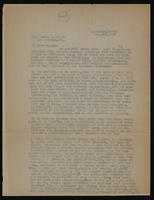
Correspondence, Levi Syphus to Hon. Thomas Toland
Date
1925-03-03
Archival Collection
Description
This folder is from the "Correspondence" file of the Sadie and Hampton George Papers (MS-00434)
Text
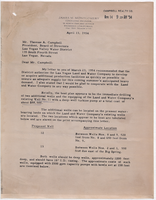
Letter including map from James M. Montgomery (Pasadena) to Thomas A. Campbell (Las Vegas), April 13, 1954
Date
1954-04-13
Archival Collection
Description
Mr. Montgomery outlines locations and costs of drilling additional wells and work to existing well. to meet community water supply needs. A hand drawn map of the Las Vegas Land and Water Company well field is included.
Text
Pagination
Refine my results
Content Type
Creator or Contributor
Subject
Archival Collection
Digital Project
Resource Type
Year
Material Type
Place
Language
Records Classification

